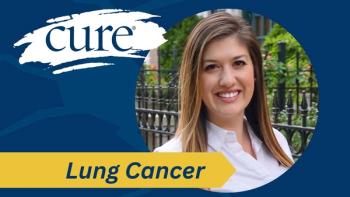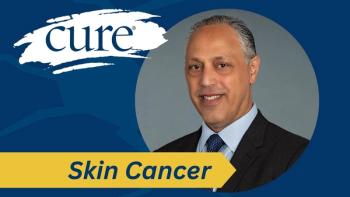
The Art of Breaking Bad News
Ask a number of people how they received unsettling news about their cancer and most will remember in striking detail, but a doctor-led program aims to help physicians learn how to break bad news better. Will it help?
At the age of 38, Lesley Andrews found herself in a breast surgeon’s office. She wasn’t too worried about the lump in her breast, assuming it was like the one she’d found three years earlier, which was benign.
After an examination and an ultrasound, the doctor took her into his office, sat behind the desk and said, “I don’t like the shape of this one.”
“My stomach dropped, and I got very upset and anxious,” Andrews says. “I was looking to him for guidance, but he wouldn’t look at me. He kept checking his beeper and wouldn’t answer my questions. Finally, he told me to go to the front desk to make an appointment for a biopsy. As I left, he said, ‘Have a nice day.’”
Ask any number of people how their doctors broke the news of a cancer diagnosis, recurrence or progression, and most will remember in striking detail. Yet, despite the numerous times the situation arises and its impact on patients, many doctors are not skilled at breaking bad news.
Studies reveal that gender, age and education can influence how an individual prefers to receive bad news. Some patients want to know everything; others can only take in so much. Some patients prefer receiving bad news over the phone in lieu of waiting for an in-person appointment, while others prefer face-to-face discussion.
Whatever the patient’s preference, the medical community recognizes it is the doctor’s responsibility to deliver information and support in a way that doesn’t harm the patient. More than a decade ago, an article published in The Oncologist developed a six-step protocol, known as SPIKES, to offer guidance to clinicians breaking bad news to patients with cancer.
The problem is that not many doctors are trained in this pivotal area, and a comforting bedside manner may not come naturally to some in the medical profession.
A neonatologist who works with parents of high-risk newborns, Anthony J. Orsini became passionately interested in the art of breaking bad news well over 15 years ago. He believes it’s a skill that can be taught, and wants patients and their families to know they have a right to expect their doctors to be good at it.
Recognizing that physicians and healthcare workers are “afraid to deliver bad news, and they don’t get enough guidance and training to go about it,” Orsini developed the Breaking Bad News (BBN) Model.
The BBN Model has three parts:
1. A scenario is provided in which professional, improvisational actors portray patients or family members to whom the participant must break bad news.
2. The role-playing sessions are filmed and watched remotely by BBN-certified instructors.
3. Immediately after the role-playing session, the participant watches the video and reviews and reflects on his or her performance with input from the instructors.
Specific attention is paid to body language and speech that communicates compassion and optimizes information flow. Participants learn how to prepare for the session, sit with the patient, lean in, make eye contact, and truly listen and react to the patient and family members.
Patty Eaton, a pediatric emergency medicine fellow in Florida, completed the program three years ago and now works as an instructor. “As an intern, we’re overworked and can lose sight of why we wanted to be a doctor. This program actually taught me how to help people, help families, support people on an individual level when going through something painful, and that’s why I entered medicine.”
Andrews never walked into her breast surgeon’s office again and had another surgeon perform the biopsy. Unfortunately, he was no better at breaking sensitive news. After the surgery, he met Andrews’ husband in the hallway and told him she had breast cancer. He then left for another surgery, leaving her stricken husband alone to break the news to Andrews.
“We thought it was a death sentence. No one came in to talk to us, no nurse, no other doctor. They just sent us home,” Andrews says.
Patients report that a doctor’s competence in communicating potentially distressing news is critical to establishing trust. Andrews agrees and believes the one silver lining of her experience was that it motivated her to eventually find doctors who better served her physical and emotional needs.
If it’s important to patients, they should discuss their preferences on being told sensitive news, and by whom, with their medical team. Perhaps a patient wants to be told immediately, even if over the phone. Some may want family members present or want to record the appointment to digest the information later. Proactively approaching the situation gives patients the opportunity to identify a person who is best skilled at gathering and transmitting information, providing support and working with them to develop a treatment plan.
In the end, the ability to break bad news well fosters a stronger doctor and patient relationship. “There is no good way to hear bad news, but you don’t want to feel like you are completely alone,” says Andrews.




